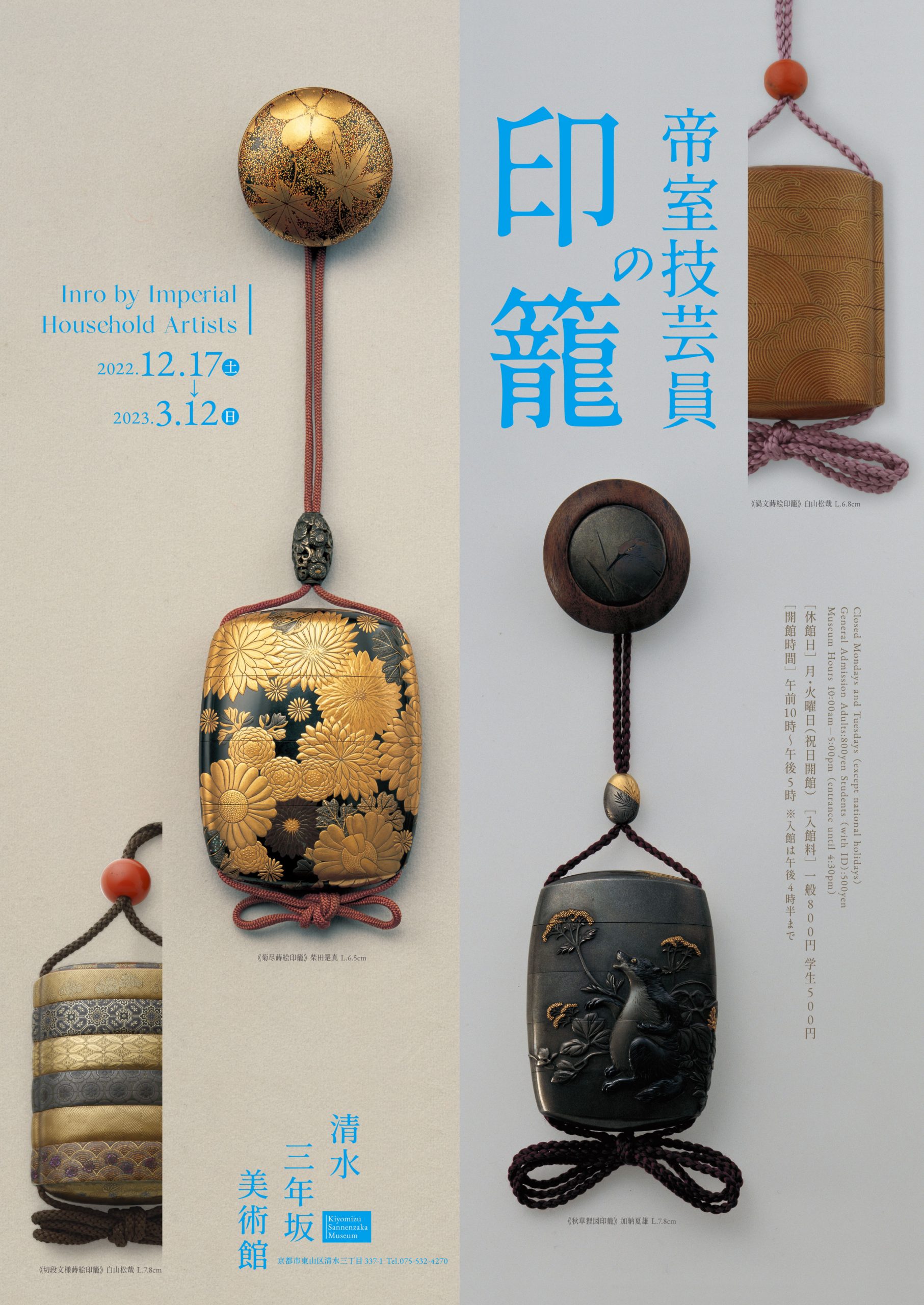
Inro by Imperial Household Artists
Inro refer to small portable cases that were hung from a person’s obi, or sash, and in the Edo period these were used primarily for carrying medicine on one’s person. Over time, they took on the function of accessories and, lavished with maki-e, mother-of-pearl, and various other adornments, came themselves to be prized as artworks. In the Meiji era, inro captivated especially overseas fans with the result that these objects were carried abroad in great numbers.
For Japan in the period immediately following its opening to the outside world, artistic craftworks like inro were an important industry that demonstrated the strength of the country and its high level of culture. It was to preserve and further develop such superior craftsmanship under the auspices of the Imperial Household that the Imperial Household Artist system was established. Subsequently, Imperial Household Artists such as Kano Natsuo and Shibata Zeshin, metalworking and maki-e artisans respectively, produced numerous articles for export as well as for exhibit at international expositions.
The present exhibition, which includes a number of articles that have made their way home from overseas, displays noted pieces in the Kiyomizu Sannenzaka Museum collection by the Imperial Household Artists Kano Natsuo, Shibata Zeshin, Ikeda Taishin, Shirayama Shosai, and Kawanobe Iccho. We hope that you will take this opportunity to peruse their mastery.
 2026-01-07 / 2022-12-17
2026-01-07 / 2022-12-17 

